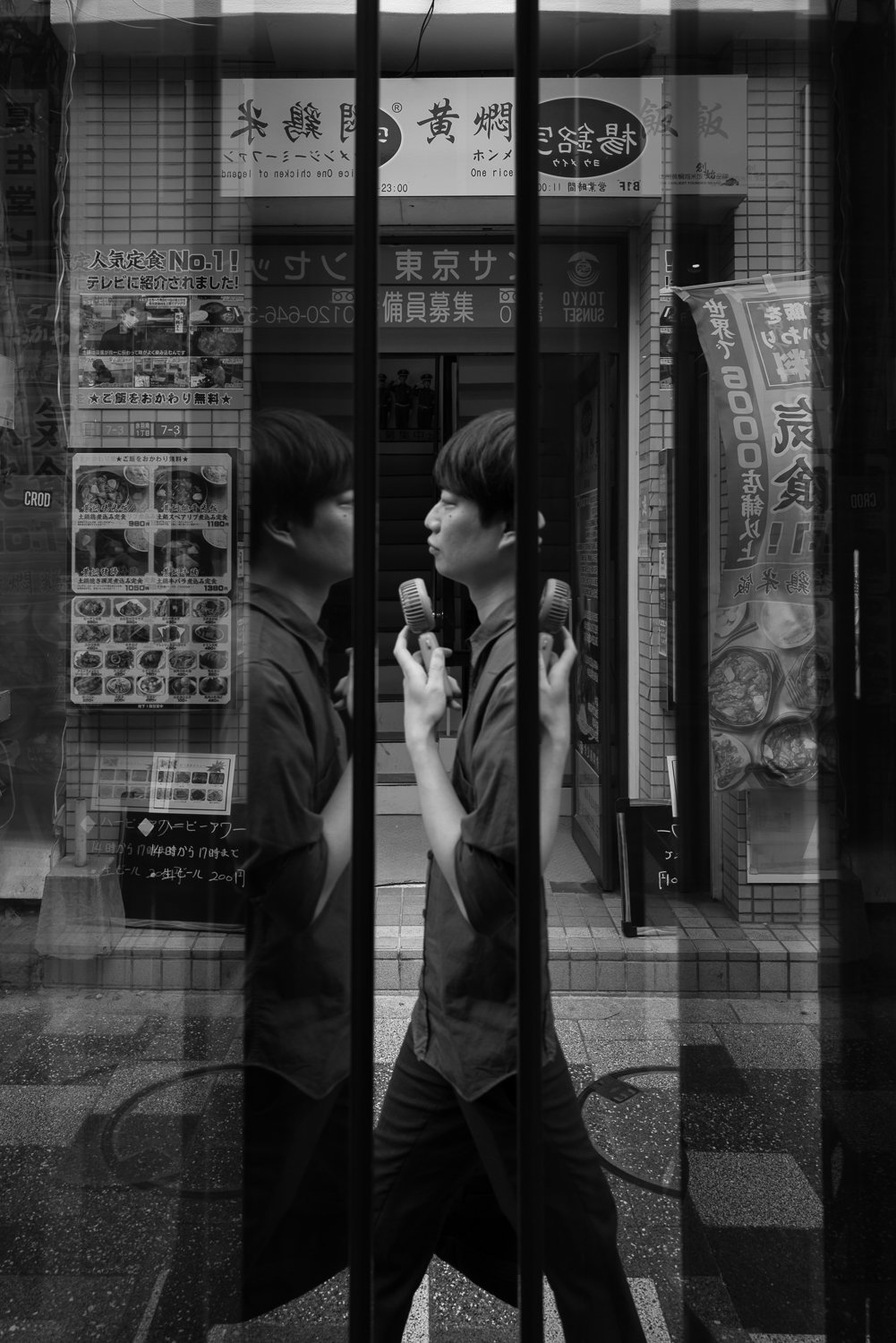The Art of Capturing The Walk in Tokyo.
The Walk:
Photographing a person walking past an interesting background is a simple yet elegant way to get started in street photography. I have been doing it for over twenty years, which helped me shoot in manual exposure full-time.
First, on the walk, find an excellent background with some pedestrian traffic. Frame up the shot and check the exposure. Be patient, and someone interesting will walk past. Then click.
At its core, that's all there is to it: pick, frame, expose and wait for the moment to come.
Security Guard in the Rain
Once you get the hang of it, you can add secondary elements. One example would be to add a graphic. It could be street art, signage, or anything else. With some experience, the juxtaposition of subject and background will begin to take place.
Moving the subject or the graphic within the frame will continue to provide a more significant opportunity for a truly exceptional image.
Mona Lisa in Omiya
One of my personal favorites, which is quite simple but requires manual shooting, is to slow down the shutter speed. This technique captures motion in the subject while keeping the background static.
A man hurries in Kanda.
Street photography typically favors a fast shutter speed, but an intentional slow shutter speed can create stunning images. This approach allows for capturing both stationary and moving subjects. The example image, taken at the iconic Seibu department store in Ikebukuro, shows some people waiting while others rush by. Thanks to the slow shutter speed, those in motion appear blurred, while those standing still are captured sharply.
7 people at Seibu Department Store, Ikebukuro.
The concluding aspect of the walk is reflection. While it may seem cliché to some, for me, it serves as an essential visual element that enhances the impact of a walking image. What starts as something simple evolves into a sophisticated, nuanced composition. The focus shifts from the subject to the background, which now takes center stage. This is a form of imagery that can be mastered relatively quickly, allowing for personalization and refinement to suit individual preferences.
Reflection #1
Reflection #2





